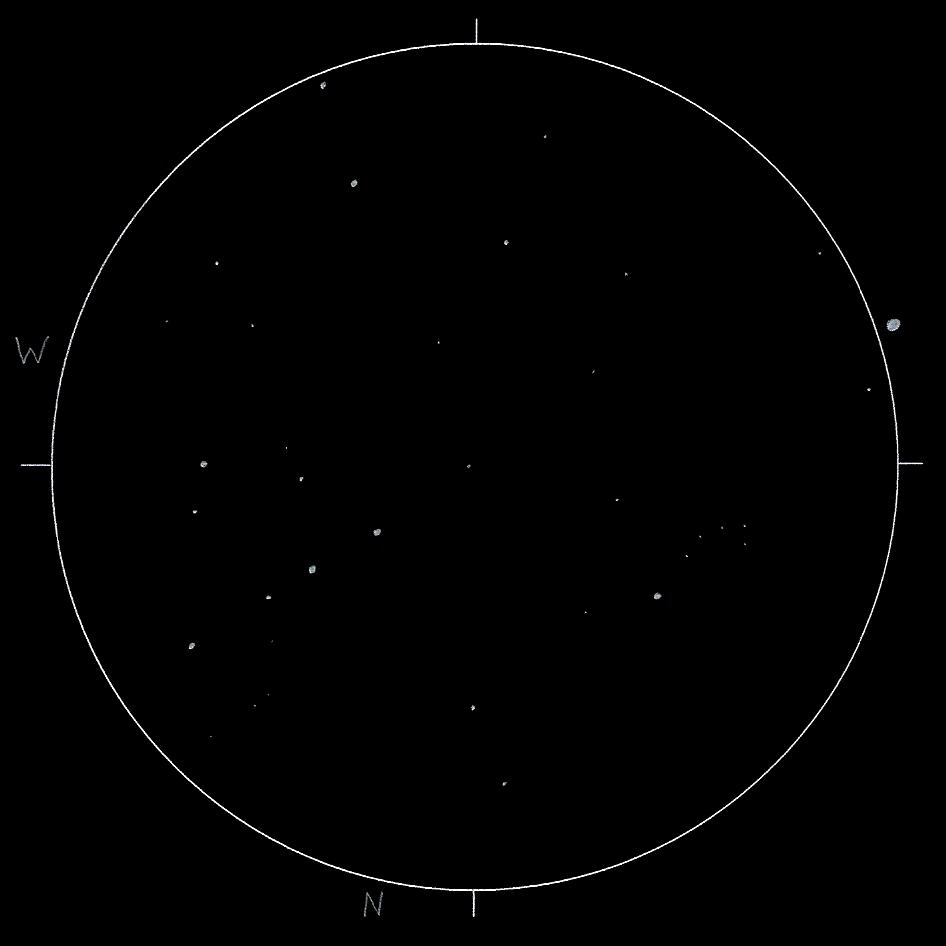
Barnard’s Runaway Star
Sketch and Details by Jef De Wit
Barnard’s Star is the closest star to our Sun observable from northern latitudes. The “Runaway” Star is a very low-mass red dwarf star 5.9 light-years away. Despite its proximity, the magnitude is a dim 9.5. At 7 to 12 billion years of age, Barnard’s Star is considerably older than the Sun and may be among the oldest stars in the universe.
In 1916, American astronomer E. E. Barnard measured its proper motion as 10.3 arcseconds per year (1° every 350 years) which remains the largest known proper motion of any star relative to the Sun. Barnard’s Star will make its closest approach to the Sun around 11,700, when it approaches within some 3.8 light-years. But it will still be too dim to be seen with the naked eye (magnitude will be about 8.5). (Information from Wikipedia)
For the moment Barnards Star (in the middle of the sketch) is situated in a line with four other stars. The bright star just outside the field of view is 66 Ophiuchi. Hopefully you and I will live long enough to see it move!
Clear skies
Jef De Wit
Object Name: Barnard’s Star
Object Type: star
Location: Hove, Belgium (51°09 north lat. 4°28 east long.)
Date and time: 30 July 2009 around 21.45 UT
Equipment: 12″ dobson
Eyepiece: 35mm Ultima Celestron (FOV 1,3° and magnification 34x)
NELM: 4,5
Medium: graphite pencils HB/n°2, printing paper, scanned and inverted

Jef,
Nice sketch. I have been tracking and sketching this star since the early 1980’s and you will have no trouble detecting motion.
Frank 🙂
Jef,
This is very nice sketch and interesting story.
Marek 🙂
Great observation
Dee